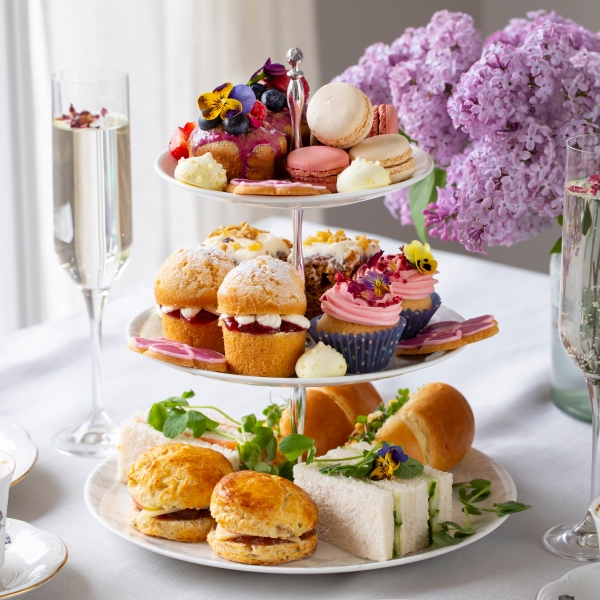Hidden Sugar in Beverages
Sugar is used in the general food production process for its preservative property, ability to condition textures, as well as enhancing the flavor. This has led to a rise in sugar consumption of the general public. The Thai Health Promotion Foundation (ThaiHealth) reports that the Thai population consumes as much as 25 teaspoons of sugar per day. The amount is 5 times higher than the Thai Ministry of Public Health’s suggested daily intake, which is only 6 teaspoons or 24 grams per day.
Knowing Your Hidden Sugar
There are many types of sugar that are used in the food industry. Each type is listed on product labels by different names, such as, syrup, honey, High-Fructose corn syrup (HFCS), fruit juice concentrates, Dextrose, Fructose, Sucrose, and molasses, to mention a few. With so many names, people tend to forget that these ingredients are, in fact, just sugar. And so, these misleading substances are what is called the ‘hidden sugar’.
Beverages with High Sugar Content
A study finds that the fruit-derived type of Sugar-Sweetened Beverages (SSB), like smoothies, tend to be underestimated by 48% for their sugar content. This may be the reason why some parents prefer this type of SSB for their children over carbonated beverages, despite the fact that some fruity SSBs are no less sugary than the next carbonated drink. An example of this is a carton of mixed-fruit flavored yogurt drink (180 ml.) may contain 6 teaspoons of sugar. Meanwhile, the same amount of a carbonated drink may actually contain 5 teaspoons of sugar.
However, children are not the only group of people who tend to consume hidden sugar. The coffee-drinking working demographic, who enjoy store-bought beverages, is also consuming hidden sugar. A survey conducted by Mahidol University on 37 different types of beverages, and has categorized these beverages into 4 groups according to their sugar content:
- Extreme High Sugar SSB: This group of beverages contains over 24 grams of sugar per 100 ml. Consumption of 1 serving of these drinks (240 ml.) contains more than 14 teaspoons of sugar. Beverages belonging to this group may include, Thai-Style Iced Black Coffee (Oliang), Iced Pink Milk (Nom Yen), Thai Iced Tea (Cha Dam Yen), and Honey Lemon drink.
- High Sugar SSB: This group of beverages contains 13-24 grams of sugar per 100 ml. 1-serving of drinks belonging to this group contain 8-14 teaspoons of sugar. Drinks falling under this group are Snake Fruit and Lemon Soda, Iced Coffee, Iced Cacao, Iced Thai Milk Tea, Iced Chrysanthemum tea, Roselle tea, Bael tea, and coconut water.
- High-moderate Sugar SSB: High-Moderate Sugar SSB may contain 7-12 grams of sugar per 100ml. One serving of this group contains 4-7 teaspoons of sugar. The beverages in this group may include orange juice, banana smoothie, watermelon smoothie, and monk fruit tea.
- Healthier Choice: Healthier Choice beverages contain no more than 6 grams of sugar per 100ml, which may include beverages with low sugar content, or no sugar at all. Products belonging to this group receive the ‘Healthier Choice’ logo, which can be found on their label.
High Sugar SSB and Health Risks
Many studies find that consumption of high sugar SSB is directly related to many health issues, such as obesity, fatty liver, insulin resistance, and tooth decay. The consumption also increases the risk of non-communicable diseases or NCDs, including diabetes, hypertension, and coronary artery disease.
One of the most concerning aspects of the issue is the consumption of such beverages in the adolescent and teenage demographics. Besides contributing to long term health issues, high sugar SSB consumption increases the risk of bone fracture by 4.94 times. This is due to SSB replacing other nutritious food and beverages, and so, a lack of calcium and vitamins vital to building bone mass may occur in these demographics.
Easy Steps to Lowering Sugar Intake
The fact that today’s store-bought food and beverages contain high amounts of hidden sugar is undeniable, and it is nearly impossible to entirely cut off sugar from one’s diet. However, with beverages being one of the biggest sugar sources in daily consumption, avoiding drinks with high sugar content is a great way to reduce hidden sugar intake.
Therefore, careful reading of the nutrition labels or going for a ‘Healthier Choice’ product when choosing a beverage can help. Trying to choose a 25% sweetness when ordering a drink is another easy way to avoid hidden sugar intake to maintain a healthy lifestyle and reduce risks of future health problems.
Reference
- Pimnapanut S, Piyanut S, Prapasri P, Yupaporn N, Prapaisri S. Sugar Content in Sugar-sweetened Beverages Sold in and Surrounding University: Case Study at Mahidol University, Salaya Campus. Journal of Public Health. 2019
- Boulton J, Hashem KM, Jenner KH, Lloyd-Williams F, Bromley H, Capewell S. How much sugar is hidden in drinks marketed to children? A survey of fruit juices, juice drinks and smoothies. BMJ Open. 2016;6(3). doi:10.1136/bmjopen-2015-010330
- Haque M, McKimm J, Sartelli M, Samad N, Haque SZ, Bakar MA. A narrative review of the effects of sugar-sweetened beverages on human health: A key global health issue. Journal of Population Therapeutics & Clinical Pharmacology. 2020;27(1). doi:10.15586/jptcp.v27i1.666




